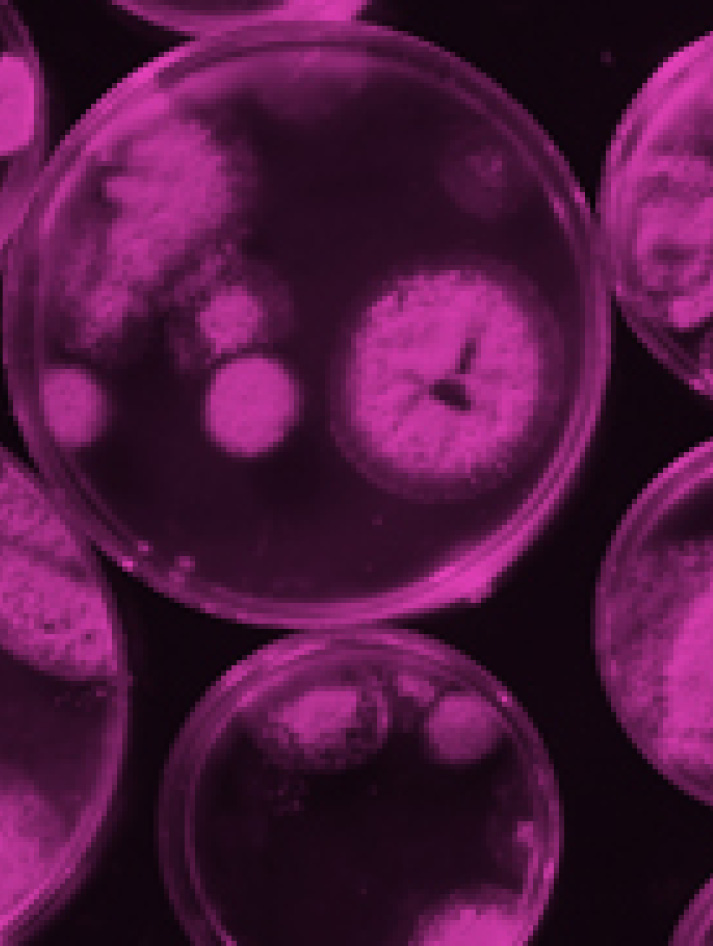 -
Volume 3,
Issue 6,
2021
-
Volume 3,
Issue 6,
2021
Volume 3, Issue 6, 2021
- Research Articles
-
-
-
Characterization and profiling of bacteriocin-like substances produced by lactic acid bacteria from cheese samples
More LessBacteriocins have become biological weapons against harmful food pathogens and have attracted interest as tools for biopreservation. The aim of this study was to isolate, identify and characterize lactic acid bacterial (LAB) strains from cheese samples, partially purify potential bacteriocins and characterize their antimicrobial activity against pathogens. Bacteriocin-producing organisms were screened by Agar spot assay test. Initially, 25 LAB isolates were isolated from the cheese samples and identified as Lactobacillius spp., among them five strains were able to produce bacteriocin whose antimicrobial activates were analysed by agar-well-diffusion assay test against pathogenic organisms. Bacillus subtilis , Bacillus cereus , Staphylococcus aureus , Streptococcus thermophillus and Listeria monocytogens were inhibited, while Enterococcus faecalis , Salmonella typhi , Escherichia coli and Pseudomonas aeruginosa were resistant to the antimicrobial substances from LAB isolates. For optimal production of bacteriocin, LAB broth cultures were harvested at exponential phase. The molecular weights of the bacteriocins are between 7.0–15.0 kDa. The bacteriocins were characterized on the basis of their sensitivity to heat, pH, enzymes, NaCl and treatments with organic solvents. These results revealed that the bacteriocins from Lactobacillius spp. isolated from the cheese might have potential antimicrobial properties and give new insight in the development of bio-preservative agents to prevent and control pathogenic bacterial infection.
-
-
-
-
Antimicrobial resistance profiles and genetic basis of resistance among non-fastidious Gram-negative bacteria recovered from ready-to-eat foods in Kibera informal housing in Nairobi, Kenya
More LessObjective. This cross-sectional study conducted in Kibera, Kenya, sought to gain insights on relative microbial contamination levels of popular unprocessed food types, determine antimicrobial resistance (AMR) burden and the carriage of integrons that are essential elements for spreading antimicrobial resistance genes (ARG). Foods analysed consisted of cooked vegetables (kale, cabbage, and nightshades), boiled cereal foods (beans, rice, and Githeri, which is a mixture of beans and maize), meat, Omena fish (fried silver cyprinids), and Ugali (a product of simmered maize flour in boiled water).
Results. The analysis detected contamination levels exceeding 2×104 c.f.u. ml−1 in 106 (38 %) of the 281 ready-to-eat foods analysed. The majority of food types had microbial contaminations of between 4.0×104 and 2.3×106 c.f.u. ml−1. Kale was the most contaminated with a mean of 2.3×106 c.f.u. ml−1, while Omena was the least contaminated with 4.0×104 c.f.u. ml−1. Foods sold close to open sewage and refuse sites were more contaminated than those sold in relatively ‘cleaner’ settings (P <0.0001, O.R 0.1162, C.I 0.1162–0.120). A total of 405 bacterial isolates were recovered and included; Klebsiella spp 116 (29 %), Escherichia coli 104 (26 %), Enterobacter agglomerans 88 (22 %), Proteus mirabilis 30 (7 %), Salmonella spp 28 (7 %), Citrobacter freundii 27 (7 %) and Serratia marcescens 12 (3 %). Imipenem (IPM, 100 %) was the most effective antimicrobial agent, followed by cefepime (98 %). Ampicillin (AMP, 33 %), trimethoprim (TMP, 27 %), and sulfamethoxazole (SMX, 23 %) on the other hand, were the least effective antimicrobials. The analysis also found ten isolates (2 %) that had co-resistance to third-generation cephalosporins, fluoroquinolone (CIP), quinolones (NAL) and aminoglycosides (GEN); hereby we refer to this phenotype as the βFQA. The prevalence of multidrug-resistant (MDR) strains was 23 % (93), while that of extended-spectrum β-lactamases (ESBL) producing strains was 4 % (17). The bla TEM was the most prevalent (55 %) β-lactamase (bla) gene among the screened 93 MDR-strains. Carriage of class one integrons (intI1) was more common (23 %) than intl2 (3 %) among these MDR-strains. Bacterial diversity analysis using the GTG5-PCR found no significant clusters for analysed E. coli and K. pneumoniae, suggesting recovered isolates were genetically diverse and not due to non-clonal expansion. The findings of this study are an indication that contaminated foods can be a reservoir for enteric pathogens and a source of AMR strains.
-
Most Read This Month


